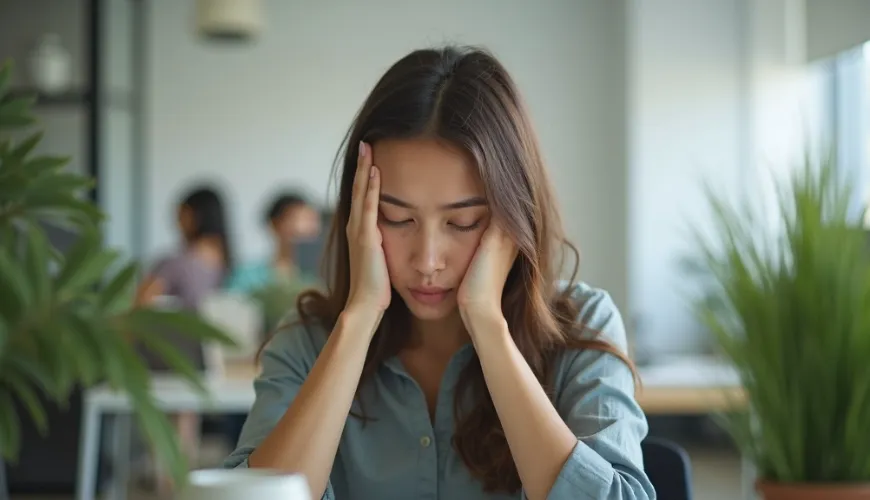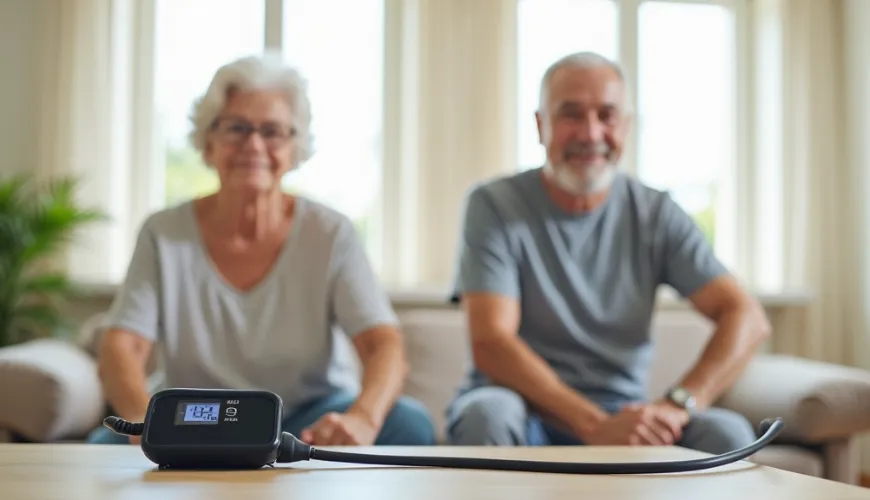
How Blood Pressure Affects Seniors' Daily Lives

Blood Pressure in Seniors - What's Normal and When to Be Alert
Aging is a natural part of life, but it brings along a number of changes that often demand greater attention. One of these changes is fluctuation in blood pressure, which is not uncommon in the older population. While blood pressure in younger people can be relatively stable, in seniors its values and the body's response to fluctuations change with age. Specifically, blood pressure in seniors over 70 years deserves special attention.
Despite the general knowledge about high and low blood pressure, few people know exactly what is considered normal in older individuals and when it becomes a health risk. As other chronic diseases increase with age, blood pressure is not just a secondary indicator—it is often a key signal of how the body is actually doing.
How Does Blood Pressure Change with Age?
In middle age, values around 120/80 mmHg are considered ideal. However, in seniors, we often encounter higher values—around 140/90 mmHg, for example—and this does not always indicate a health problem. Blood vessels lose elasticity with age, which can lead to a slight increase in systolic pressure (the top number). This condition is called isolated systolic hypertension and is particularly common in people over the age of 70.
On the other hand, low blood pressure in seniors can be just as problematic as high blood pressure, especially if it causes dizziness, weakness, or even falls. It turns out that very low pressure in late age can worsen blood flow to the brain and other organs, contributing to fatigue, confusion, or a decline in cognitive functions.
What Is Normal Blood Pressure in Seniors?
There is no single value that is ideal for everyone. Doctors today recommend an individualized approach—blood pressure in a senior over 70 should be such that it does not threaten the functioning of the organism and at the same time minimizes the risk of cardiovascular complications. Generally, a pressure around 130–140/80–90 mmHg is considered acceptable for most people in advanced age.
According to the guidelines of the European Society of Cardiology, systolic pressure in seniors should not be lowered below 130 mmHg therapeutically, but at the same time, it should not persistently exceed 150 mmHg. The diastolic pressure (the bottom value) should ideally be kept between 70 and 90 mmHg.
It is important to emphasize that more than the numbers themselves, symptoms matter. A senior with a pressure of 145/85 mmHg who feels well may be in better health than someone with a pressure of 120/70 who frequently experiences dizziness.
When Blood Pressure Rises - High Blood Pressure in Seniors
High blood pressure in seniors—or hypertension—is one of the most common chronic diseases in older age. According to WHO data, more than two-thirds of people over 65 suffer from hypertension. The problem is that increased pressure often does not hurt and may not cause any apparent problems for a long time. However, this "silent" nature makes it a dangerous enemy.
Long-term high blood pressure increases the risk of stroke, heart attack, heart failure, or kidney damage. In seniors, it is also problematic because hypertension is often accompanied by other diagnoses, such as diabetes, memory disorders, or osteoporosis.
A typical scenario might be, for example, an eighty-year-old woman with a pressure around 160/90 mmHg who feels stable. However, if she also suffers from diabetes and has kidney problems, it is important to control the pressure more strictly, as any increase in values can have serious consequences.
The treatment of high blood pressure in older individuals must be very cautious—too aggressive lowering of pressure can lead to dizziness, risk of falls, and disorientation. In some cases, a "slightly elevated" pressure may be a lesser evil than complications associated with its rapid reduction.
Too Low Blood Pressure - The Silent Culprit of Falls and Weakness
On the other end of the spectrum is low blood pressure in seniors, which is often overlooked. Yet, hypotension can be the cause of frequent falls, sudden weakness, or even loss of consciousness. In older individuals, pressure can easily drop, for example, after standing up quickly from a chair, after a heavy meal, or due to certain medications.
One common case is called orthostatic hypotension, where pressure drops significantly when changing body position—such as when standing up. This condition can manifest as sudden dizziness, nausea, or even a brief loss of consciousness. In seniors who often live alone and already have reduced stability, this phenomenon poses a significant risk of injury.
Another factor that can lower pressure is dehydration. Older people often have a reduced sense of thirst and drink less, which can lead to a decrease in blood volume and consequently a reduction in pressure. Especially in summer, adequate fluid intake is crucial.
How to Keep Blood Pressure Balanced?
The foundation is regular measurement—ideally at the same time and place. Modern blood pressure monitors allow for easy monitoring even in a home environment and help doctors better evaluate long-term trends. In addition, it is important to monitor symptoms—such as whether the senior feels fatigued, has frequent dizziness, or experiences difficulty breathing.
Lifestyle also has a significant impact on blood pressure. In seniors, physical activity is often limited, but even short daily walks or light exercise can have a positive impact. Likewise, diet plays a crucial role—a balanced intake of salt, sufficient potassium (for example, from fruits and vegetables), alcohol limitation, and adequate fluid intake are critical factors.
An interesting approach can also be the use of natural supplements and herbs that support vascular health—such as hawthorn, garlic, or omega-3 fatty acids. However, these resources should always be consulted with a doctor, especially if the senior is taking multiple types of medication.
Try our natural products
An example can be Mr. Karel, a 76-year-old former teacher who started experiencing morning dizziness. After consulting with a doctor, it turned out that his pressure dropped below 100/60 mmHg after waking up. Adjusting his home routine, ensuring sufficient fluids the night before, and slightly increasing his salt intake helped him stabilize his pressure and improve his quality of life.
As William Osler, one of the founders of modern medicine, once said: “The doctor treats the disease, but nature heals the patient." This is especially true for seniors, where a gentle approach often leads to better results than radical therapy.
When to See a Doctor?
Fluctuations in blood pressure are common, but some symptoms should be warning signals. These include:
- Frequent dizziness or fainting
- Sudden weakness or confusion
- Chest pain or shortness of breath
- Significant deviations in measured values (e.g., above 180/110 or below 90/60)
- Repeated falls without an obvious cause
It's not just about blood pressure itself, but the overall picture of health. Additionally, in seniors, cooperation with family or caregivers is important, as they can help with regular measurement or recognize early warning signals.
Caring for blood pressure in old age is not just about numbers—it's a comprehensive approach to the body, mind, and environment. And even though high or low pressure may seem like just one of many health metrics, it is actually the key to longevity and quality of life in advanced age.





